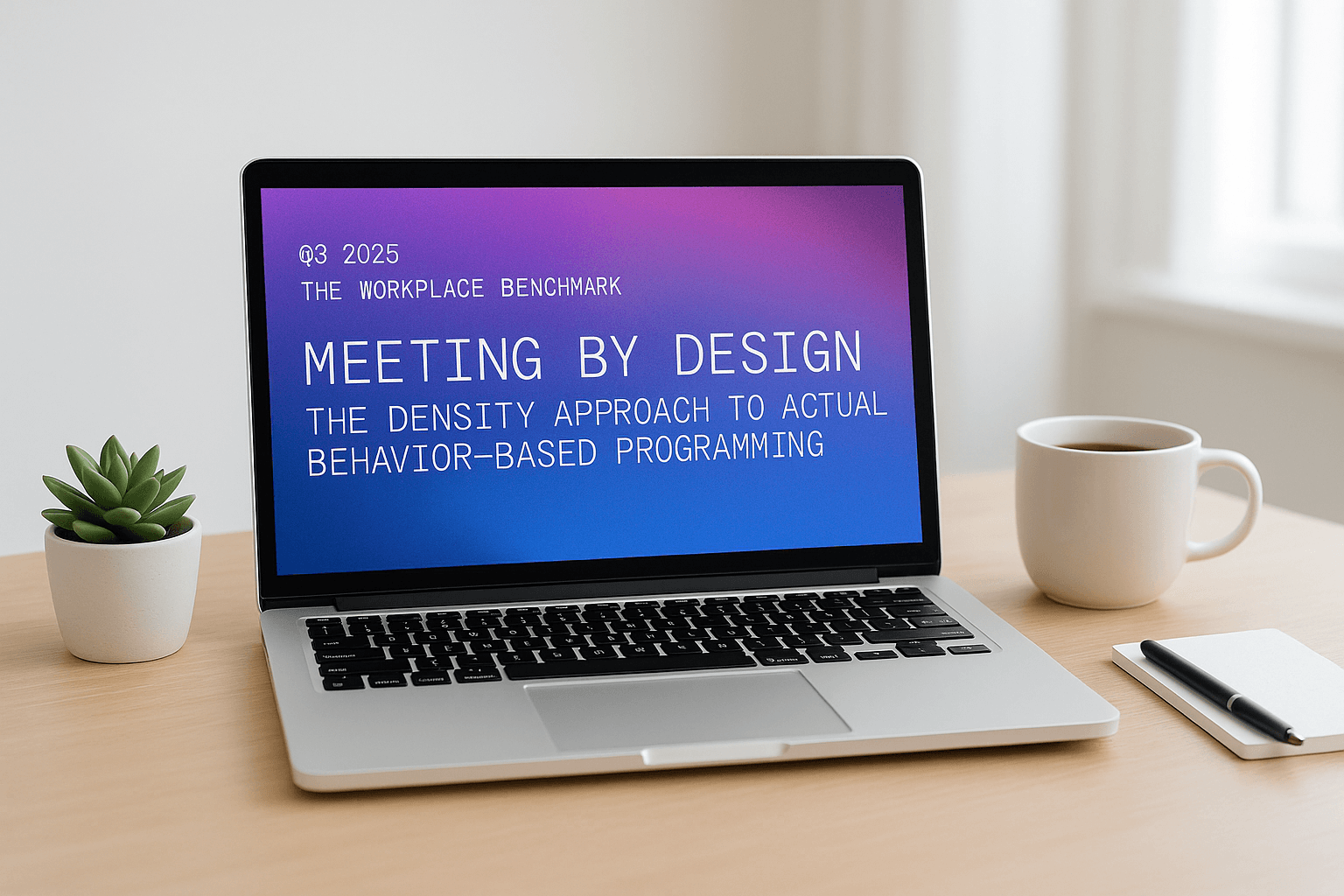The future of real estate with 3 CBRE alumni
CBRE alumni Lauren Schwalb, Caroline Davis, and Mike Palladino share their expert insights on the changing workplace.

The commercial real estate industry is experiencing multiplier effects as the workplace moves from a traditional 9-5 model to something much more flexible. CBRE alumni Lauren Schwalb, Caroline Davis, and Mike Palladino share their expert insights on the changing workplace and what the future of CRE looks like.
Here are a few takeaways.
The importance of the office for onboarding
The office has become more than just a place to work, with companies using the office as a way to immerse new employees into their workplace culture. During the pandemic, the lack of in-office experiences took its toll on how onboarding played out for many. “[Cameo] has actually done some really interesting surveying and case studies for their own office. They were able to determine that it actually took them nine months during the pandemic to get new sales professionals up to the same level as they were able to do in 90 days when people were in the office.” — Mike Palladino
Understanding that your workplace speaks for your company — from brand to culture and everything in between —and having a place to absorb what a company is made of is essential in the onboarding experience.
The questions workplace leaders should be asking
The list of questions about what the future of work looks is a priority for many workplace leaders in the post-pandemic world of work. “Things are changing so rapidly, so what’s top of mind is how do you manage and plan for the new normal? What’s the future of work? How do you bring your employees back to the space? What’s important to employees when they’re back on-site? I think what we know for certain post-pandemic is that flexibility is critical.” — Caroline Davis
Answering these questions requires more than just assumptions and surveys. It requires measuring what is working, how spaces are being used, and feedback on how needs are changing. This combination of insights can help to support the redesign of more effective and enjoyable workplaces.
Amenities help get employees into the office
Getting people back to the office requires more than free coffee and a warm seat. People are creatures of comfort, and that comfort has been provided by their home office setup for the last two years. Incorporating those comforts of home with enhancements in the workplace can give people a reason to want to come into the office. “I think bridging the gap between that home life and work life is super helpful, so obviously there are lots of different amenities and services that you can provide. Dry cleaning services, meal prep discounts, car wash, or refueling during the day if I’m commuting. I hate getting gas; it’s my least favorite thing. Having that option there would probably get me into the office for that day. So think about things that can save employees time as it relates to amenities.” — Lauren Schwalb
CRE needs time to collect utilization data to inform future decisions
Like many industries, CRE can no longer assume what will happen. People can no longer go by what has worked in the past, as the future of work has created an uncharted territory. Decade-long leases and the thinking behind getting more space have been halted by the knowledge of understanding how spaces are used before signing up for more. “…I heard a lot of real estate leaders talking about short-term extensions. So, [they’re] doing one-year term extensions to buy themselves more time to [collect] data to understand how many people are coming into the office. How are people engaging with the space when they’re there? Then think about [how] to go forward. I think right now it’s either an extension, a shorter-term lease to buy time to understand the trends that are going to inform their future portfolio needs.” — Caroline Davis
The future of the workplace and commercial real estate are inextricably linked. Landlords and occupiers must work together to improve building utilization. The keys to doing this are flexible policies, utilization data, and thinking about space differently.
Key Takeaways

DisruptCRE founder shares how corporate real estate is changing
Companies are moving employees from underutilized offices into "space as a service” options with utilization data.
Watch now
Half of offices are empty but you still can’t find a meeting room
Employees waste up to 30 minutes a day looking for a meeting room to meet in workplaces.
Read moreMost recent

Meeting space playbook: programming ratios that really work
Forget static formulas. This new research-driven playbook shows how to use real behavior to right-size your office for today’s meetings.

Space waste: The industry’s naughty and nice list
Our sensors spilled the beans: What industry is winning, who's wasting and who's hogging your office real estate.
.png)
Improve your occupancy sensor RFP with our best practice guide
Discover essential questions to simplify your occupancy sensor RFP process and confidently choose the right vendor.
.png)
Room raiders: The office upsizing epidemic
Tiny teams hogging big rooms leave large groups stranded—welcome to the new war for meeting space!
Explore other Density Products
Atlas for Workplace
Insights for the workplace that help you cut costs and deliver better spaces.
Learn more